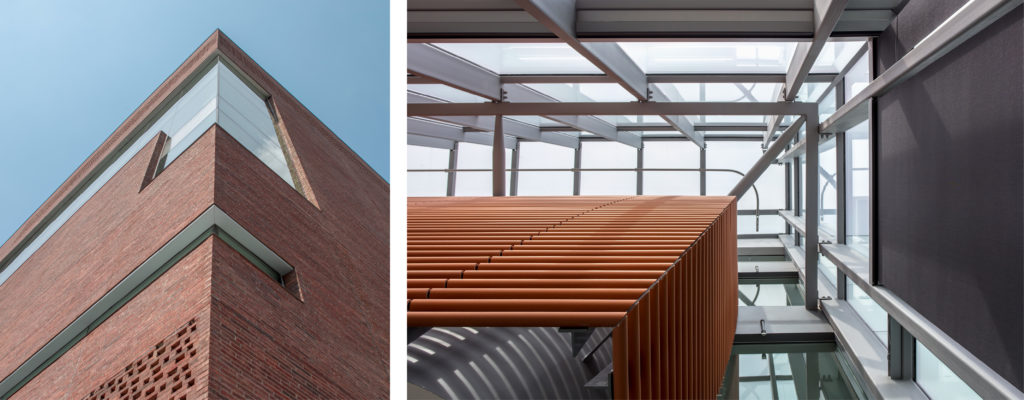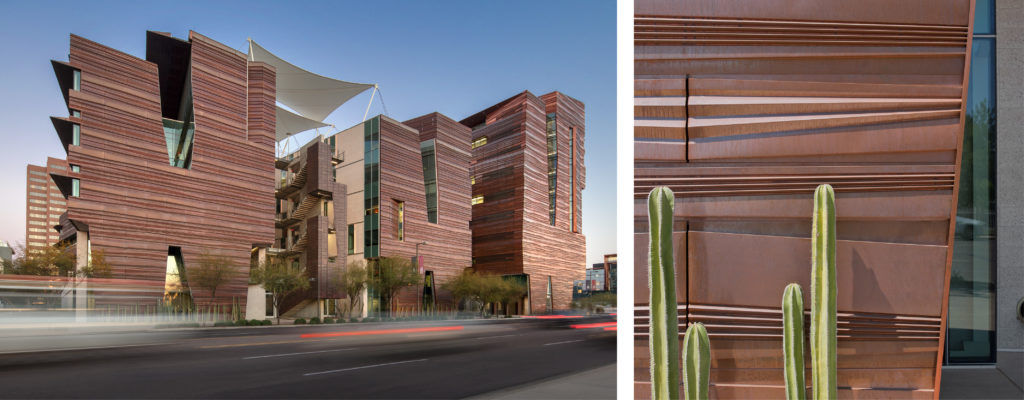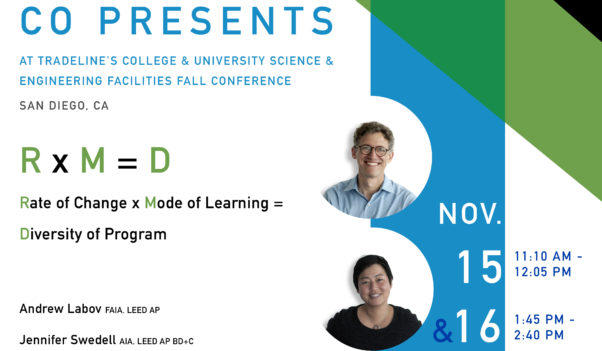Facade Engineering at CO

As published in Konsept Projeler, Issue #59 October – December 2018.
By Alex Korter

Facades
Building enclosures (facades and roofs) need to increase their capabilities beyond the basic function of providing an air, water, and thermal barrier. They are a crucial building system, just like structural, heating, cooling, electrical, or communication systems. In our ongoing need for more efficient and innovative buildings, these systems need to work in support of one another to be closely coordinated and hybridized.
Beyond helping to minimize the negative impact of buildings on the environment, facades are also the physical, visual, and psychological boundary between inside and outside with a significant responsibility to generate a positive response from people on both the interior and exterior of a building.
Understanding the psychological, neurological, and thus, emotional impact that building envelopes have on people at different levels is important to us at CO Architects. We want to make sure our facades create positive experiences, generating intrigue, exploration, joy, and interaction among occupants and neighbors.
Phases of Design
True performance – driven design: We start with establishing a clear definition of what facade performance means to each particular project and how the envelope’s capabilities will be elevated to maximize benefits to the client, place, and occupants.
Context-to-program profiling: Given the inside/outside duality of facades, we try to dig deep into the context and climate of a particular place to define what the opportunities are. We tie external features directly to interior functions to optimize planning and minimize inefficiencies.
Non-negotiable fundamentals: We always detail and specify for long-term air and water tightness, thermal value, and success over time. We also look at cost, energy, and other system performance metrics to inform the design.
Sustainable Facade Design
It’s important to look at sustainability from multiple perspectives to include environmental requirements, as well as functional, economic, and socio – cultural aspects. Facades need to evoke a sense of place and belonging while responding to local climate conditions. They need to actively contribute to reducing a building’s use of natural resources by passively minimizing the strain on other building systems. A selection of responsible, maintainable, and cost-effective materials and systems ensures long-term performance. Lastly, ongoing messaging of the intent and goals for the facade from early concepts through detailing, fabrication, installation, and occupancy helps a facade’s overall sustainability.

Important Elements
There seems to be an increase in innovative applications of more solid materials, including ceramics, wood, concrete, composites, and metals, in combination with glass systems. This is extremely encouraging because it is bringing a strong element of craft back into building envelopes. Unfortunately, the non-descript, all-glass building is still very prevalent in most cities making local identity and high-performance elusive.
The true value of good facade design is also difficult to metricize from a cost perspective. Upfront and long-term costs are currently based on building systems, and are mainly realized indirectly through heating, cooling, or lighting efficiencies. The benefit to the community or occupants is very challenging to put a number on. That said, much more research and data on the direct impact of envelopes on people is becoming available, which will lead to a positive and significant effect on the industry.
Developing Technology
Digital technology continues to evolve as a great tool for visualization and communication of the design intent. It provides further means to share concepts with a broader audience that may not be well versed in understanding traditional tools like 2D drawings. However, given
the more personal experience using AR, VR, and MR platforms, we have also seen challenges in getting stakeholders involved. We are still learning how to use these new tools in the most effective manner.
Parametric analysis of systems performance is becoming easier to integrate in the design process to inform energy or budget decisions immediately, rather than trying to validate them after the fact. Although it’s still a challenge, intra-operability between design, analysis, engineering, and fabrication platforms is improving. Digital tools have also had a very positive impact on bringing design and manufacturing closer together by providing a common language. We have to be careful to not overuse digital technology and be purposeful in its application, since easier and compelling visualization and in-depth systems analysis still do not necessarily make better architecture. Remembering to focus on the ‘why’ before figuring out the ‘how’ in building is really important.


